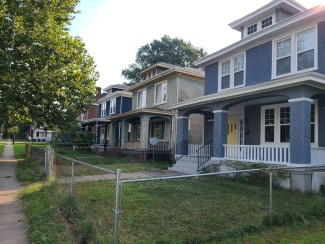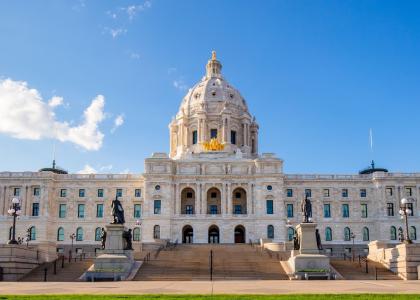Efficient buildings are essential for housing affordability and sustainability. ACEEE’s 2025 buildings agenda focuses on building codes, retrofits in disinvested communities, and smart growth zoning policies to lower costs, support underserved communities, and create resilient, sustainable housing for the future.
The 2024 election underscored a household priority: the cost of living. High inflation increased prices by 21% between January 2021 and December 2024, and housing costs—including mortgage or rent, maintenance, and utilities—remain the largest expense, consuming 33% of a typical household budget. Addressing these high costs must be a top priority for the new administration and state and local governments.
At ACEEE, we’re focused on solutions that reduce the cost of owning, renting, and maintaining a comfortable home while ensuring that these efforts protect our environment for future generations.
Affordability is linked with energy efficiency and managing electric demand
Energy efficiency is a proven tool for lowering utility bills and making homes more affordable. For over 40 years, ACEEE has led efforts to reduce energy costs through efficiency measures. Our newly launched Pathways to Zero initiative, leading a coalition to help states adopt stronger residential energy codes, exemplifies this work. In partnership with six leading states, this program aims to develop advanced building codes that will result in the construction of homes that use energy efficiency to dramatically reduce energy use, allowing remaining energy needs to be powered entirely by renewable sources, such as rooftop solar, effectively eliminating energy bills for new homes.
Meanwhile, initiatives like Residential Retrofits for Energy Equity (R2E2) target low- and moderate-income homes, which are often older and inefficient and thus impose high energy burdens on residents. These programs help communities deliver impactful upgrades such as weatherization and modern equipment, ensuring that the most vulnerable households benefit from energy efficiency and electrification.
Addressing the costs of environmental and health damage from dirty energy
The costs of environmental damage from burning fossil fuels are significant. Recent disasters such as the Los Angeles wildfires—now the costliest in history—were exacerbated by rising temperatures and drought. Meanwhile, 131 million Americans—or four in ten—live in areas with unhealthy air pollution levels.
According to the International Monetary Fund, in 2022 the U.S. government spent $754 billion addressing the health and environmental consequences linked to fossil fuels. Efficient buildings powered by clean electricity are part of the solution.
Promoting location efficiency through smart growth zoning
Efficient land use and zoning policies reduce energy consumption and foster sustainable, livable communities. By adopting location-efficient zoning codes, cities can encourage compact, mixed-use development that supports public transit, walking, and biking.
For instance, Lansing, Michigan, modified its zoning code in 2021 to allow multifamily and mixed-use developments in all commercial areas by-right. Also in 2021, Raleigh eliminated requirements for off-street parking in new buildings. Both policies reduce urban sprawl and encourage walkable neighborhoods.
Implementing such zoning policies, however, does more than reduce transportation costs and create more livable, connected, and resilient urban environments. By reducing barriers to construction, smart growth allows for the construction of plentiful new housing, built to modern building codes. This drives down rents across neighborhoods and reduces utility bills for the people who live in the new buildings.
2025 action plan for energy efficiency and affordability
Federal building efficiency standards and funding are crucial to reducing housing costs for Americans and developing advanced technologies. Now they are under attack. In the coming year, ACEEE will defend federal efficiency policies and incentives by collaborating with manufacturers, builders, contractors, and advocates, including to preserve key programs from the Inflation Reduction Act and the 2021 bipartisan infrastructure law such as the tax credit for new homes and the Home Energy Rebates program.
ACEEE also plans to continue working with local governments and community-based organizations to reduce energy waste in single-family and multifamily housing in disinvested communities. By doing so, we aim to reduce inequitable energy burdens.
ACEEE will support states in developing and implementing up-to-date building energy codes. These efforts will promote clean and efficient new buildings, contributing to long-term energy savings and sustainability. ACEEE will work to reduce the total costs of appliances and equipment while advocating for zoning reforms that increase the availability of efficient, conveniently located homes.
Building a sustainable and affordable future
The path forward is clear: We can reduce financial stress for American households while tackling the urgent challenges of climate change. Investing in energy efficiency and reforming outdated zoning policies can improve lives, protect the environment, and create a more resilient and affordable housing market for 2025 and beyond.




